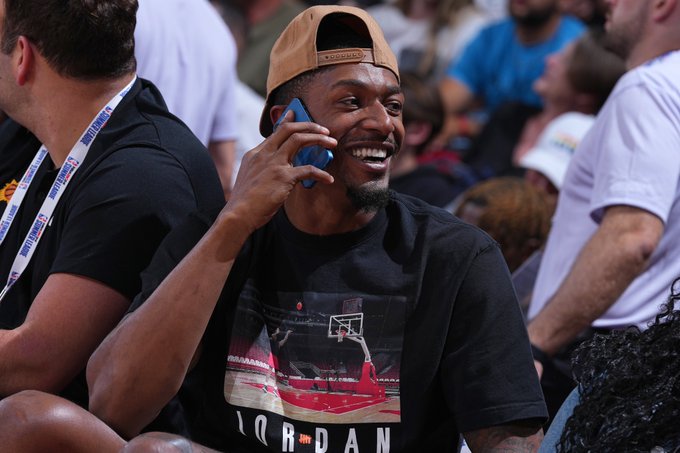A Bradley Beal buyout appears increasingly likely for the Phoenix Suns. While John Voita admits, “it’s not a move I necessarily support,” he acknowledges that if the team believes there’s no alternative, his stance doesn’t matter. “This is the reality now. It’s how they’ve chosen to move.”
At this point, it’s not about if, but when.
The conversation now turns to financials. A typical route might involve stretching Beal’s $97 million buyout over five years, resulting in about $22 million in dead cap money annually through 2029–30. However, there’s another approach.
While most conversations focus on the stretch provision, there’s less talk about a potential two-year buyout that doesn’t involve stretching. This path avoids the 15% cap hit restriction, making it a cleaner option—albeit costlier up front—but possibly more beneficial long term.
Regardless of the method, this is a pivotal moment in how the Suns recover from what many see as a failed gamble.
So what does a non-stretch Beal buyout look like in practice?
Beal’s current contract includes $110.8 million over the next two seasons—$53.7 million this year and $57.1 million next. That equates to a 48.5%/51.5% split across the two years. Any buyout amount—be it $100 million, $80 million, or otherwise—would be divided using the same ratio:
A $100M buyout would count as $48.5M this year and $51.5M next.
A $80M buyout would mean $38.8M this season and $41.2M the following one.
The formula is straightforward: apply the 48.5/51.5 split to determine the cap implications.
Some suggest simply paying Beal his full $53.7 million this season to stay away, hoping he eventually requests a trade out of frustration. This would be more of a pressure tactic than a cap solution—“a pressure tactic. One that banks on ego, discomfort, and time to solve what cap math hasn’t.”
However, the Suns have another choice between a prolonged standoff and a five-year stretch: negotiate a reduced buyout and take the hit over two years instead. It’s not perfect, but it avoids long-term financial strain. “It’s your Hannah Montana scenario. It’s the best of both worlds.”
One way to frame this decision is by comparing it to paying an injured star player. Imagine Boston carrying Jayson Tatum or Indiana with Tyrese Haliburton on the books—both max contracts sidelined with injuries. Buying out Beal could be viewed similarly: absorbing a big contract for two years, but with flexibility beyond.
Why would Phoenix take this route?
Though it doesn’t ease short-term cap issues, it opens long-term flexibility. It clears a roster spot—“how you doin’, CP3?”—and depending on how the math works out, could drop the team below the second apron. According to Salary Swish, the Suns sit $5.9 million above it, not including rookie contracts.
Is this the most probable scenario? According to Bobby Marks, it’s unlikely. “Why would Beal give up $30+ million?” Still, this is the financial puzzle Phoenix must solve as they near Beal’s likely release.
The final buyout figure is critical—not just for the books or PR—but because it will shape the rest of Phoenix’s offseason. Will they absorb the hit in two years? Stretch it over five? Can they offload Grayson Allen or Royce O’Neale? Might this move make a key free agent affordable?
Whatever path they choose, it begins with how the Suns manage what may be “the most expensive mistake in franchise history.”
